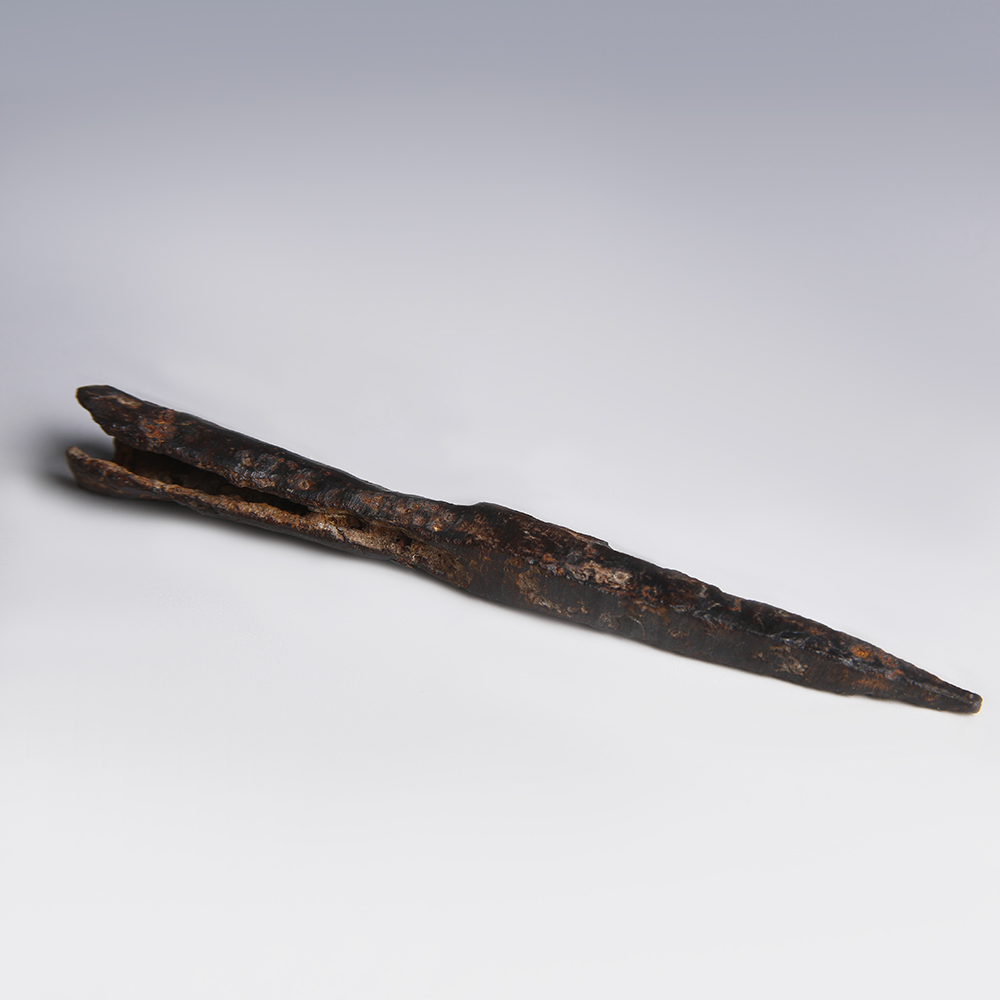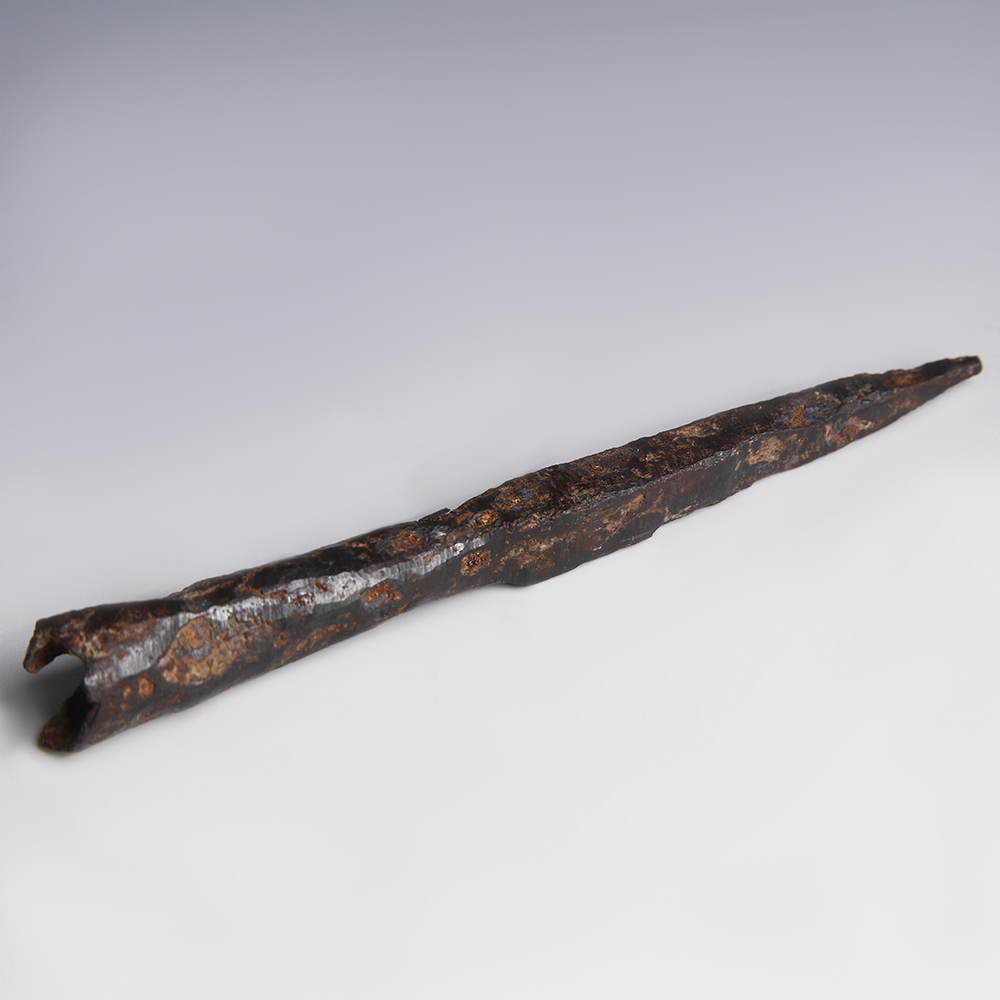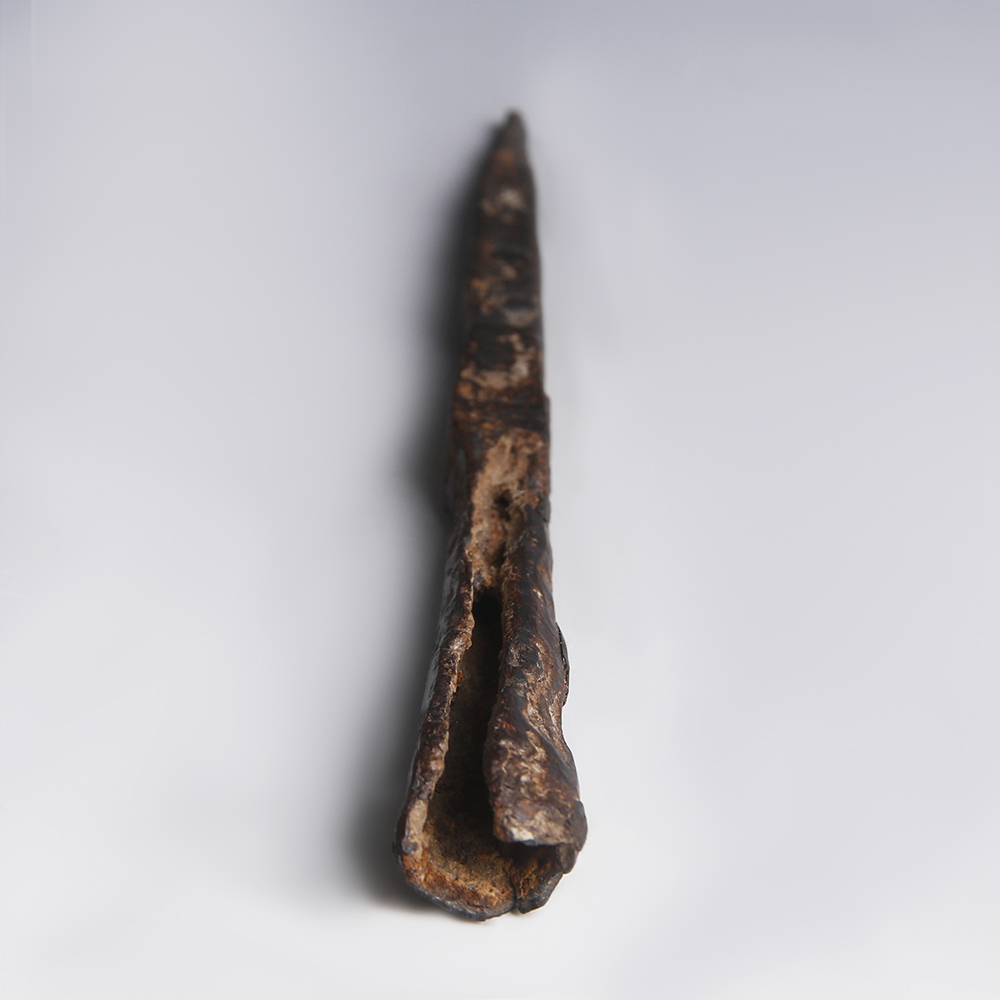Iron-working was introduced to Europe in the late 11th century BC and was widely used for producing weapons, tools, and utensils. From circa 1200 to 700 BC, iron arrowheads and bolt heads developed alongside bronze weapons but eventually, iron completely replaced them during the Byzantine era. Iron is lighter and stronger than bronze and its greatest advantage was the abundance of iron ore, which allowed for a reduction in production costs. Indeed, the initial development of iron weapons was most likely driven by a decline in the trade of tin, a primary component of bronze. With the shift to iron, weapons and utensils were no longer cast, but individually hammered into shape, which slowed down the production process.
Ancient Roman Iron Bolt Head
$93.47
An Ancient Roman iron ballista bolt head featuring a pyramidal, square-sectioned body with uneven edges and surface, and terminating into a blunt point. The slightly pronounced shoulder slopes into a wide socket which would have held the piece onto a wooden shaft.
Provenance: From the Brookie family collection. Preston, Lancashire, bought in the 1990's from ADA London gallery.
Condition: Good condition, signs of ageing and some earthy encrustations on the surface.
SOLD
| Weight | 33.4 g |
|---|---|
| Dimensions | L 12 x W 1.5 cm |
| Culture | |
| Region | |
| Metal |


